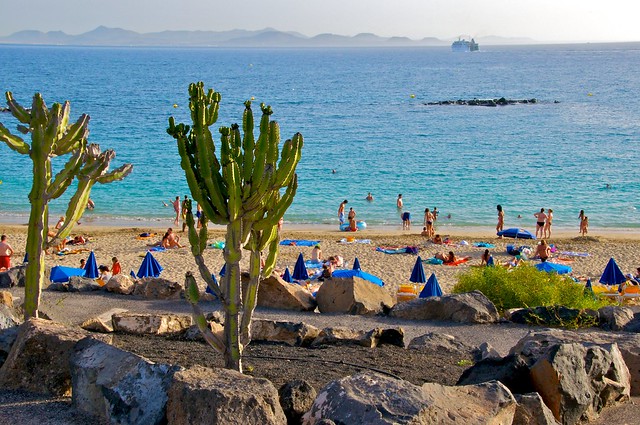The Canary Islands have long been a brilliant holiday destination for Brits keen to enjoy a decent dollop of sun and sand without paying over the odds. My favourite isle in the archipelago is Lanzarote, largely thanks to the fact it has, in my opinion, some of the most stunning landscapes to be found anywhere in the world.

It’s this magnificent scenery, as well as the island’s other natural attractions, that I’ll be focusing on today. Hopefully, my list of top places to visit will inspire you to take a trip to Lanzarote in the future.
The lowdown on Lanzarote
First, let’s take a quick look at why Lanzarote is such a haven of natural attractions. It’s largely down to its origins; around 22 million years ago volcanic activity resulted in the formation of the island and, over time, the weird and wonderful landscapes it’s home to. It’s the oldest of the Canary Islands and, when you gaze out at its ancient lava fields, you really do get a sense of just how old it is.
For me, the most important natural attractions to see here are the lava fields, because they’re what makes the island so unique, while there are also some amazing caves. Yes, the beaches are gorgeous too, but I’m not going to focus on these today as so many destinations can claim to have a great coastline.
Timanfaya National Park
I think that if it’s natural wonders you’re after, Timanfaya National Park is definitely the place to start. Covering just over 5 hectares in the Yaiza region, it’s made up of striking and utterly strange fields of solidified lava. For the best view, head up to the natural viewpoint at Montana Rajada – from here you can see all the way out to the coast.
There are a couple of things to bear in mind when visiting this national park. Firstly, only the coastal path is open to the public; you can (and should) see the rest, but you’ll need to arrange this through one of the visitors centres. Secondly, I really recommend spending some time in these centres, because they offer some fascinating insights into how the landscape has affected human life here – and how local people have learned to live in harmony with it.
Los Jameos del Agua Caves
Over in Carretera de Orzola is the Los Jameos del Agua Caves. Venture inside this prehistoric cave and you’ll not only get see some incredible rock formations, but also a huge natural lake.
This lake is one of the biggest attractions here, especially as it’s home to the jameitos, which are tiny albino crabs. If you’re travelling with kids, make sure you tell them about these little creatures so they can have fun trying to spot them.
Cueva de los Verdes
My final suggestion is the Cueva de los Verdes, which is one of the world’s longest volcanic galleries, spanning a total of 6 km. It’s also among the island’s most interesting volcanic formations, and back in the 17th century it was where local people went to hide from the likes of slave hunters and pirates. So, there are lots of reasons to visit!
While you’re here, you’ll be taken on a circular tour of the cave’s impressive lower galleries. The rock formations have been lit to highlight their most striking features, and the tour will end at a beautiful lake that, as it reflects the rocks all around it, makes the cave look even more vast than it is in reality.


